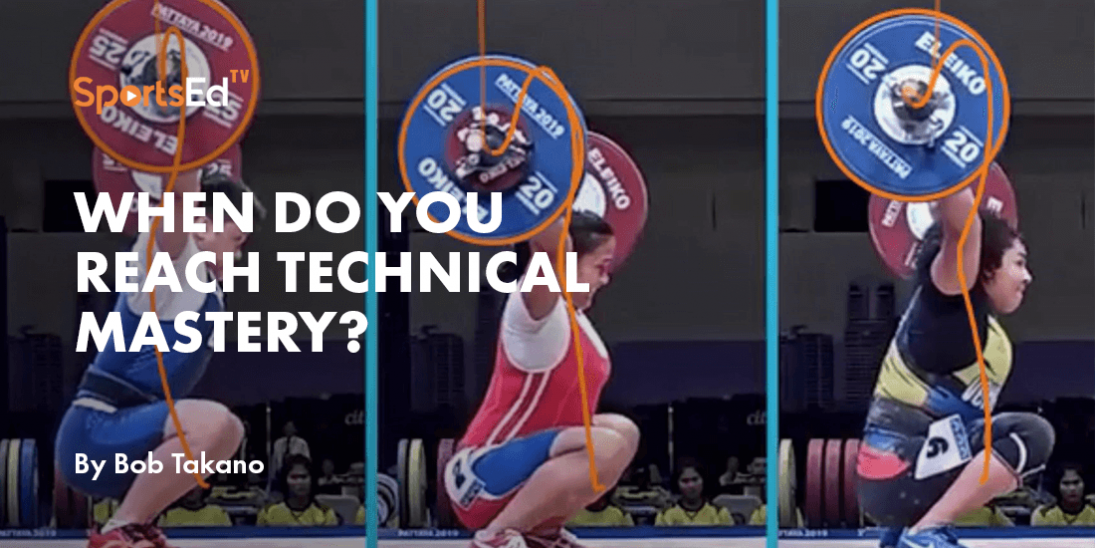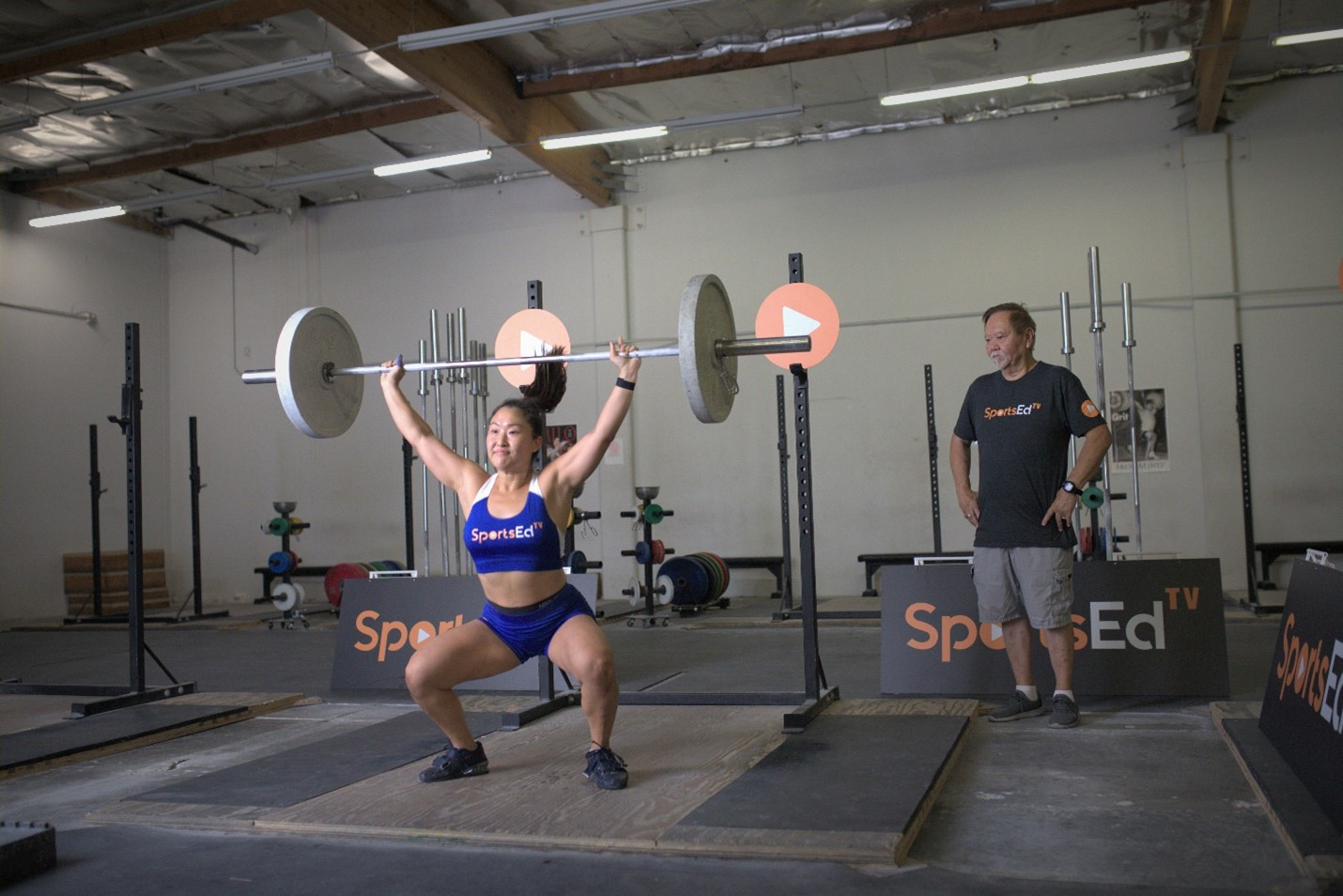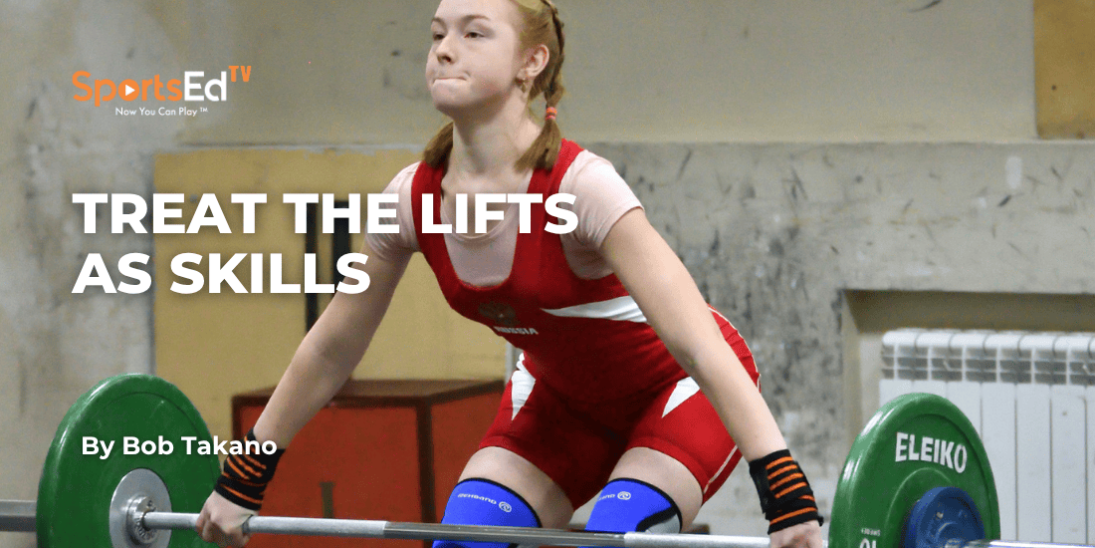Weightlifting
Welcome and thanks for visiting...

When Do You Reach Technical Mastery?

Learning proper weightlifting technique is an important subject for so many athletes these days. Not only are many people involved in learning the snatch and clean &; jerk, but it appears that there are a significant number of people teaching it if the numbers that have taken the USAW L1 course is any indication.
It is important I believe to identify the stages of technical mastery so that aspiring technicians have some sort of roadmap to follow as they progress from neophyte to master technician.
The Remediation stage: Many lifters will have to go through a period of improving joint mobility, strengthening areas that are disproportionately weak, and learning basic movement patterns that are necessary for performing the lifts. Limited mobility at shoulders, hips, and ankles appears to be the most common problem involving joint factors. Static stretching performed when the joints are warm will greatly help remediate these problems. Weaknesses in the shoulders, lower back, and legs should also be trained in order to attain the various positions indicative of sound technique. Specific local exercises can be employed to move the body toward more balanced strength anatomy relative to weightlifting. Individuals who have not mastered such basic skills as jumping, two-handed overhead tossing, sprinting, and ballistic push-ups need to spend time catching up with properly prepared athletes.
The Mime Stage: This is the stage where many people start and it may be worked on simultaneously with the remediation stage, as the resistance employed is not especially heavy. Athletes work on performing the correct motor patterns of technique with light resistance and gradually moving up to weights that will allow dynamic rhythms and timing to be practiced. During this learning stage, the athlete should develop the ability to perfectly “mime” a lift with very light resistance, such as a dowel or light weightlifting bar.
The Proficient Stage: In this stage, the athlete will have to employ sound biomechanical technique to lift the weights that are 80% of maximum and heavier. If these weights can be lifted without employing sound technique, then technique has not been sufficiently mastered. In other words, the technique must be efficient enough to enable the lifting of 80% and heavier weights. Most lifters in the Class 3 through Class 1 fall into this stage. Athletes that have mastered technique to this level have also brought their strength levels into balance for performing the snatch and clean & jerk.

The Technique Mastery Stage: At this point, the athlete has achieved technical proficiency and is ready to embark on several years of performing thousands of lifts at 80% and above in order to develop better timing, more explosiveness, and to be able to make the minute adjustments necessary when there are the slightest variations in conditions. These adjustments may take place during the actual execution of the pulling or jerking phases or after the weights have been fixed in the snatch, clean, or jerk but are slightly out of position. Athletes who reach technical mastery can make adjustments in performance that are unattainable by most lifters. They are the result of years of preparation combined with superb athletic talent.
So, if you are planning on becoming a weightlifter, you need to realize that you are embarking on a journey that will involve perfecting technical mastery of the lifts for several years under the watchful eye of a coach who is proficient at adjusting and manipulating technical flaws. You may be able to progress to a certain point, but you will not fulfill your potential without proper and competent coaching.








